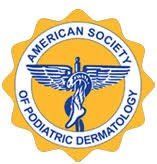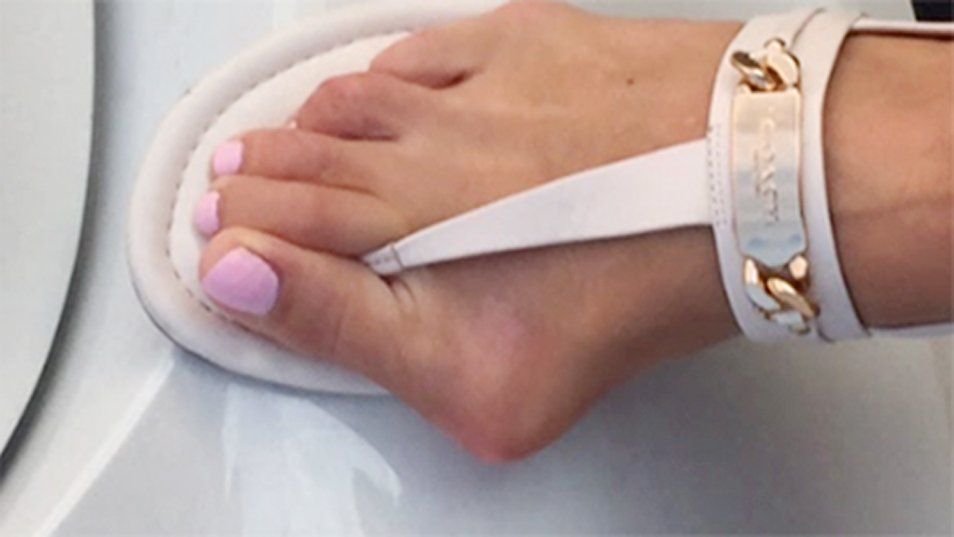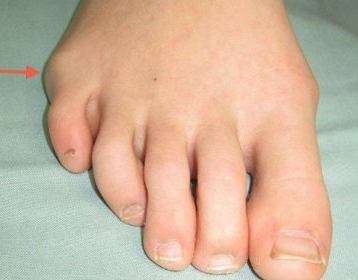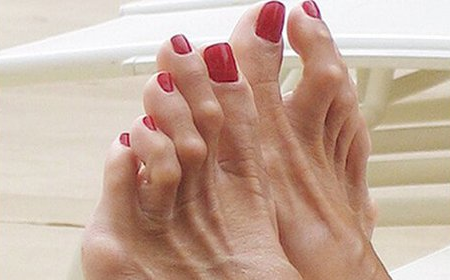Effective Treatment for Bunions
Bunions are most often caused by an inherited faulty mechanical structure of the foot. It is not the bunion itself that is inherited but certain foot types that make a person prone to developing a bunion. Although wearing shoes that crowd the toes will not cause bunions, it sometimes makes the deformity get progressively worse. Symptoms may therefore appear sooner. Symptoms, which occur at the site of the bunion, may include: Pain or soreness, inflammation and redness, a burning sensation, possible numbness. Symptoms occur most often when wearing shoes that crowd the toes, such as shoes with a tight toe box or high heels. This may explain why women are more likely to have symptoms than men. Also, spending long periods on your feet can aggravate the symptoms of bunions.
Bunions are readily apparent. The prominence is visible at the base of the big toe or side of the foot. However, to fully evaluate the condition, x-rays may be needed to determine the degree of the deformity and assess the changes that have occurred. Because bunions are progressive, they do not go away and will usually get worse over time. But not all cases are alike—some bunions progress more rapidly than others.
Early treatments are aimed at easing the pain of bunions, but they will not reverse the deformity itself. These include:
- Changes in shoewear: Wearing the right kind of shoes is very important. Choose shoes that have a wide toe box and forgo those with pointed toes or high heels, which may aggravate the condition
- Padding: Pads placed over the area of the bunion can help minimize pain. These can be obtained from your surgeon or purchased at a drug store.
- Activity modifications: Avoid activity that causes bunion pain, including standing for long periods
- Medications: Oral nonsteroidal anti-inflammatory drugs (NSAIDs), such as ibuprofen, may be recommended to reduce pain and inflammation.
- Icing. Applying an ice pack several times a day helps reduce inflammation and pain
- Injection therapy: Although rarely used in bunion treatment, injections of corticosteroids may be useful in treating the inflamed bursa (fluid-filled sac located around a joint) sometimes seen with bunions
- Orthotic devices: In some cases, custom orthotic devices may be provided by the foot and ankle surgeon.
Tailor's Bunion (Bunionette)
What Are Hammertoes?
Hammertoes may be aggravated by shoes that do not fit properly. A hammertoe may result if a toe is too long and is forced into a cramped position when a tight shoe is worn. Occasionally, hammertoe is the result of an earlier trauma to the toe. In some people, hammertoes are inherited.
Common symptoms of hammertoes include: Pain or irritation of the affected toe when wearing shoes, corns and calluses (a buildup of skin on the toe, between two toes, or on the ball of the foot), inflammation (redness or a burning sensation), and depending on the contracture of the toe, open sores may form.
Although hammertoes are readily apparent, to arrive at a diagnosis, we will obtain a thorough history of your symptoms and examine your foot. During the physical examination, we may attempt to reproduce your symptoms by manipulating your foot and will study the contractures of the toes. In addition, x-rays may be taken to determine the degree of the deformities and assess any changes that may have occurred.
Hammertoes are progressive and will not go away by themselves. They usually will get worse over time. However, not all cases are alike—some hammertoes progress more rapidly than others. Once your foot has been evaluated, a treatment plan for your hammertoes can be developed that is suited to your needs.
There are a number of nonsurgical measures which can be undertaken:
- Padding corns and calluses: Your foot and ankle surgeon can provide or prescribe pads designed to shield corns from irritation. If you want to try over-the-counter pads, avoid the medicated types. Medicated pads are generally not recommended because they may contain a small amount of acid that can be harmful. Consult your surgeon about this option
- Changes in shoewear: Avoid shoes with pointed toes, shoes that are too short, or shoes with high heels—conditions that can force your toe against the front of the shoe. Instead, choose comfortable shoes with a deep, roomy toe box and heels no higher than two inches
- Orthotic devices: A custom orthotic device placed in your shoe may help control the muscle / tendon imbalance. Injection therapy. Corticosteroid injections are sometimes used to ease pain and inflammation caused by hammertoe
- Medications: Oral nonsteroidal anti-inflammatory drugs (NSAIDs), such as ibuprofen, may be recommended to reduce pain and inflammation. Splinting / strapping. Splints or small straps may be applied by the surgeon to realign the bent toe
In some cases, usually when the hammertoe has become more rigid and painful or when an open sore has developed, surgery is needed.
Often, patients with hammertoe have bunions or other foot deformities corrected at the same time. In selecting the procedure or combination of procedures for your particular case, we will take into consideration the extent of your deformity, the number of toes involved, your age, your activity level, and other factors. The length of the recovery period will vary, depending on the procedure or procedures performed.
Find the Right Treatment for You
Dr. Mickenberg will take the time to determine the best possible treatment plan for your specific situation, whether it be surgery or non-invasive options. Call (410) 255-0040 to schedule an appointment with a well-educated, caring doctor. New patients are always welcome.
If nonsurgical treatments fail to relieve bunion pain and when the pain of a bunion interferes with daily activities, it is time to discuss surgical options. Together, we can decide if surgery is best for you.
A variety of surgical procedures is available to treat bunions and hammertoes. The procedures are designed to remove the bump of bone, correct the changes in the bony structure of the foot and correct soft tissue changes that may also have occurred. The goal of surgery is the reduction of pain and deformity.
In selecting the procedure or combination of procedures for your particular case, we will take into consideration the extent of your deformity based on the x-ray findings, your age, your activity level and other factors. The length of the recovery period will vary, depending on the procedure or procedures performed.
If you are suffering from bunions or hammertoe, call Ambulatory Foot Care at (410) 255-0040 to schedule an appointment.









Share On: